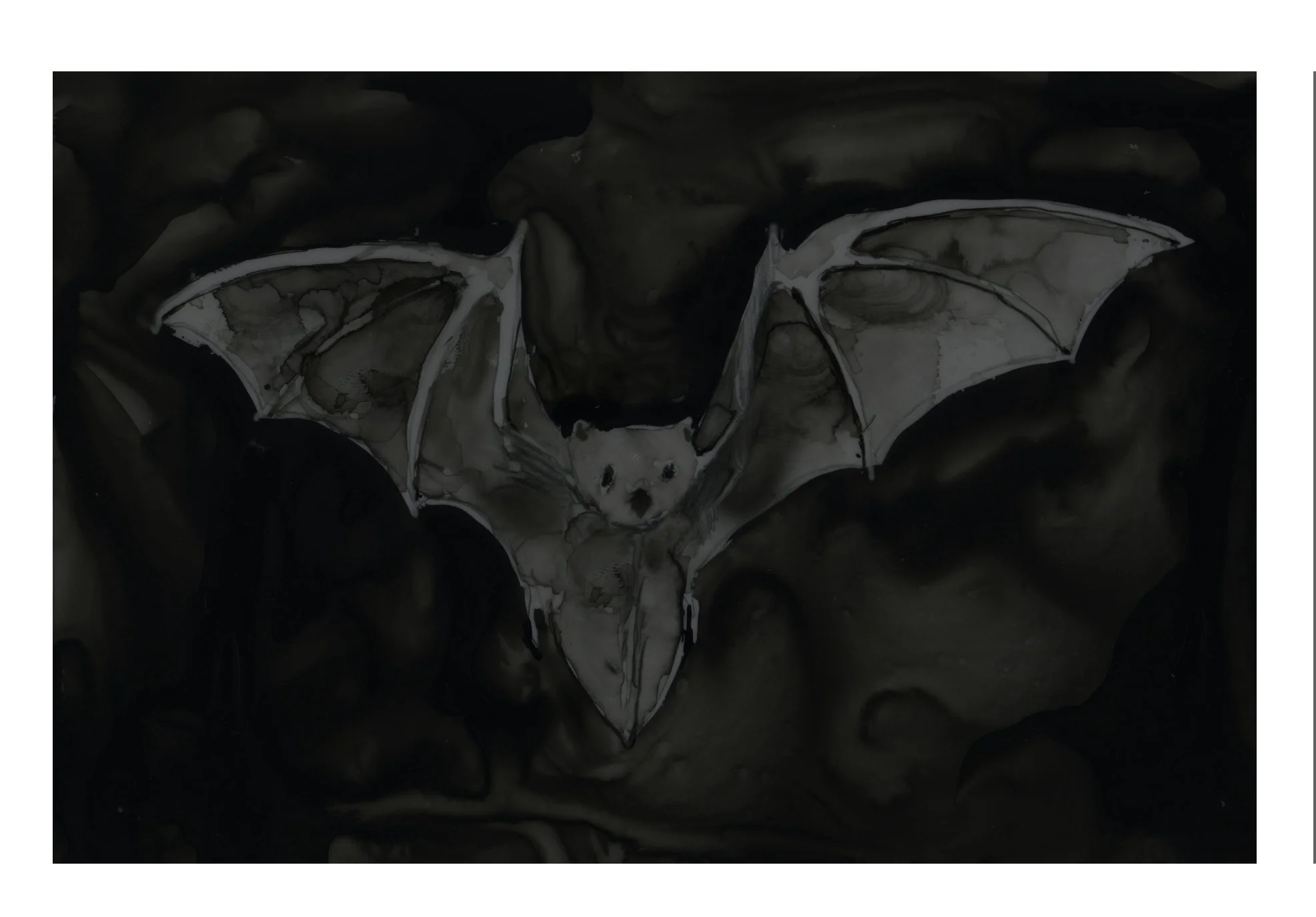The Outside Story: Migration time for eastern red bats
Oct. 20, 2022 | By Conrad BakerIllustration by Adelaide Murphy Tyrol
Swift and apparently silent, a lone bat traces the contours of the woods’ edge at dusk, floating through canopy and meadow. In the last daylight, a sharp-eyed observer might catch a glimpse of white armpits, indicating that this is no barn bat or attic bat.
This is an eastern red bat.
Eastern red bats (Lasiurus borealis) are mavericks. Where flocks of little brown bats huddle en mass in caves and human-made structures, eastern red bats roost in breezy treetops – and are mostly solitary.
One of the few occasions that brings red bats together is migration.
During their southward journey in October, two bats might suddenly find each other and engage in a brief aerial romance. The female will store the male’s sperm through the winter, delaying fertilization until the following spring.
Mothers raise their pups alone. Twins are common, although litters may include up to five. The pups cling to their mother all day. She leaves them to catch flying insects in the early evening, returning frequently to allow the pups to nurse. After about a month, pups are flight-worthy. Another few weeks later, and they’re weaned mosquito- and moth-killers themselves.
Throughout the summer, an eastern red bat consumes its weight in flying insects every night. This amounts to about 3,000 insects, including such pests as mosquitoes, spongy moths, and eastern tent caterpillar moths. Red bats are quick and agile and adeptly intercept flying prey. In common with other northeastern bats, they use echolocation, emitting extremely high-pitched “barks” normally inaudible to humans. The sound of a bat’s bark reflects off nearby obstacles and flying insects, allowing the bat to “see” through its ears.
When a promising insect echo catches the bat’s ear, the bat barks faster, playing a high-stakes game of “Marco Polo” with the prey. The closer the bat becomes to potential prey, the more frequent its barks, allowing it to pinpoint the insect’s movements. As the bat closes the gap, the barks become a brilliant vibrato – a “feeding buzz.” The coup de grace comes when the bat either snatches the insect out of the air like a poodle receiving a frisbee, or reaches out with a wing to flick the morsel into its mouth.
Although most insects have poor odds against a bat that has locked onto them as prey, Tiger moths, including the parents of our beloved woolly bear caterpillars, have a remarkable defense. They have specialized tymbal organs, drumstick-like structures which vibrate madly when the moths detect a bat-feeding buzz. The sudden noise from the tymbal organs disorients the bats just enough to give the moths a fighting chance of escape.
While many other bat species spend their winters hibernating in caves and other shelters, eastern red bats are adapted to cope with the cold. They have fully-furred tails, which they can partially wrap around themselves, like half an umbrella. Not only does this warm them, but it keeps their core dry in rain – and serves as camouflage. An eastern red bat dangling from a twig by one foot looks for all the world like a dead leaf, rattling in the wind.
But even eastern red bats have their limits. Starting in October, when days shorten and nighttime temperatures dip consistently into the low 30s, eastern red bats in the northern parts of their range head south. Surprisingly little information is available about their wintering grounds, but there seems to be a general consensus that bats from Canada and the northeastern United States head south, with some of them traveling as far as Mexico.
According to journals and records from before the Industrial Revolution, swirling swarms of red bats were once common on the East Coast during the fall. Apparently, they share a similar migration route with many birds, including warblers.
Gone are the days of large-scale red bat migrations. Now, these bats are normally seen alone, or in small migrating groups. This might be due to light pollution and habitat fragmentation spreading red bat populations out, however, rather than evidence of a steep population decline. Eastern red bats are listed as secure throughout their range in the northeastern United States, although the general decline in flying insect populations is a noteworthy change for all northeastern bats.
Conrad Baker is an environmental educator at Letchworth State Park in the Genesee Valley in western New York. The Outside Story is assigned and edited by Northern Woodlands magazine and sponsored by the Wellborn Ecology Fund of the New Hampshire Charitable Foundation.

